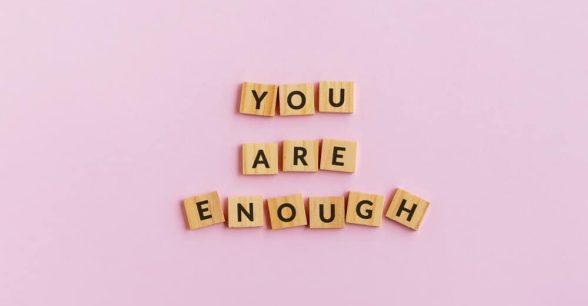Why Aren’t More Disabled People Online?
On my corner of the internet, disabled people are everywhere. If I pop on Twitter, chances are high that there’s at least one great disability-related conversation going on, while my inbox is filled with disabled people talking about issues from fashion to politics. Since its inception, we’ve been using the internet to network, advocate, innovate, and educate. Consequently, I often tend to think of the disability community as “very active online.”
That’s actually not the case. In data published in April by the Pew Research Center, analysts saw that disabled people are actually much less likely to use the internet than their nondisabled counterparts. 23 percent of disabled respondents said they “never” went online — as opposed to eight percent of nondisabled participants. That means that disabled people are missing out on opportunities for socializing, career development, connecting with the disability rights movement, accessing educational tools, and much, much more.
So why aren’t disabled people online, and what can we do about it?
Access, please
The history of the internet almost precisely parallels that of the Americans with Disabilities Act (ADA), passed in 1990; another relevant law, Section 508, amending the Rehabilitation Act of 1973 to add mandates for accessibility for government electronic resources, was passed in 1998. However, internet inaccessibility remains a huge problem, from Netflix to Twitter to, yes, government websites.
Even as users come up with their own accessibility hacks, web accessibility is a pernicious problem, and often a low priority for web developers. If you wonder why some disabled people aren’t big fans of the internet, or aren’t active online at all, it’s because of the feeling that accessibility is not of any concern to developers, and it’s exhausting to try to identify usable websites and services.
Poverty and privilege
Disabled people are more than twice as likely to live in poverty as nondisabled people, and are also twice as likely to be unemployed. This is true even more so for multiply marginalized people, including disabled seniors, LGBQT people, and people of color. Web-enabled devices aren’t cheap; smartphones and tablets can still cost hundreds of dollars, especially when purchased outright instead of bought as part of a plan from a major provider. Similarly, monthly access fees for home internet, especially broadband, can be quite high.
While libraries and some other public spaces offer internet access and devices for clients who don’t own them, it can be time-limited, with users required to yield computers to other patrons after a set period of time. Online activity may also be restricted, with most public resources using software to block downloads and filter websites in the interest of digital security. Yet, these issues aside, this still doesn’t promote full equality — especially on the fast-moving firehouse of social media, where an hour of Twitter on a library computer two days a week will leave you woefully behind.
Technological literacy gaps
For digital generations like mine, many things online feel like second nature, but innovations happen so fast that even I often feel several steps behind. For some disabled people, that gap is even more severe, with roots in this nation’s segregated approach to education.
As long as disabled students are siloed in isolated classrooms that are treated more like daycares than they are legitimate educational environments, they will continue to graduate feeling out of step with their nondisabled counterparts. Nondisabled students are receiving computer training and the social education that comes with being surrounded by peers using social media, learning to code, and engaging in complex activities online. Conversely, disablist education policy turns out generation after generation of people who are uncomfortable with technology because nondisabled educators didn’t bother to teach disabled people how to use it.
For many disabled people, economic inequality and inaccessibility – the two primary obstacles to internet access – are solvable problems, not intrinsic barriers. Anti-discrimination efforts can increase access to education, employment, and housing, which can in turn improve socioeconomic status, while reforms to government programs can eliminate restrictions that trap people in poverty. Making accessibility a priority from day one on all projects, meanwhile, can prevent costly and frustrating future fixes.
It should be possible to boost disabled engagement online — and in doing so, the disabled community will be able to play a bigger role in an increasingly digitized society.
About Rooted In Rights
Rooted in Rights exists to amplify the perspectives of the disability community. Blog posts and storyteller videos that we publish and content we re-share on social media do not necessarily reflect the opinions or values of Rooted in Rights nor indicate an endorsement of a program or service by Rooted in Rights. We respect and aim to reflect the diversity of opinions and experiences of the disability community. Rooted in Rights seeks to highlight discussions, not direct them. Learn more about Rooted In Rights




There are also institutions (boo) that don’t have WiFi and the computers that are hooked up through Ethernet are for staff!!!
If you’re photosensitive, and if you need to block flashing and animation, it can be a constant arms race against web designers and advertisers. (Besides flashing, I’m particularly sensitive to zooming and to carousel side-scrolling. Any of these can trigger immediate migraines.) I need dozens of accessibility fixes to use Firefox. Some still gets through. I can’t test Chrome, because the Chrome website punches me with animation. I have tested several other browsers, such as Safari, Opera, Vivaldi, etc. but these browsers punch me with flashing and/or animation.
Of course, if you’re photosensitive, and if you are blinded, disoriented, and unbalanced by flashing lights such as turn signals, public transportation, public crosswalks, etc. can be dangerous and the internet can be a lifeline.